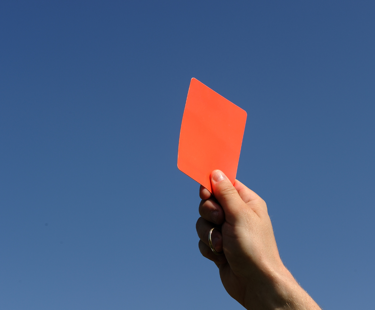On 24 June, the Supreme Court handed down its much-anticipated decision in Iconix Luxembourg Holdings SARL (Umbro) v Dream Pairs Europe Inc.
The decision provides further clarity on the concept of ‘post-sale confusion’, whilst handing the Court of Appeal a judicial slap on the wrist for their intervention in the matter.
Background
The case centred on a dispute between Iconix, the owner of the ‘Umbro’ brand, and Dream Pairs Europe Inc, a footwear company that had sold products in the UK affixing a logo known as the ‘DP logo’. Iconix alleged that the DP logo infringed its registered Umbro trade marks, specifically its well-known ‘double diamond’ logo used on football boots in the UK. Iconix claimed the DP logo infringed trade mark rules and issued proceedings under section 10(2) and 10(3) of the Trade Marks Act 1994. The respective marks are shown below.

At the High Court, Iconix's claim was dismissed as the judge decided there was only a very faint resemblance to the Umbro trade marks; therefore, concluding that there was no likelihood of confusion.
Iconix went on to be successful on appeal in 2024, with the Court of Appeal finding that the trial judge had made errors in principle. The Court of Appeal concluded that the trial judge’s conclusions were irrational, as they had failed to properly consider ‘post-sale’ confusion or any realistic and representative viewing angles in the post-sale environment. Had the trial judge taken this into account, the Court of Appeal decided that they would have concluded a least a moderate degree of similarity between the marks.
Dream Pairs subsequently appealed to the Supreme Court. The three issues at hand were:
1. Whether "realistic and representative" circumstances in a post-sale context can be taken into account when considering whether signs are similar (“the similarity issue”).
2. Whether post-sale confusion can form the sole basis for infringement or whether it can only be taken into account when it specifically impacts a subsequent transactional context ("the confusion issue").
3. Whether the Court of Appeal was entitled to re-make the decision (“the Court of Appeal issue”).
Supreme Court Decision
The similarity issue
Dream Pairs had argued that it was improper for the Court of Appeal to take into account the ‘post-sale’ environment and, as a matter of law, the analysis should be restricted to a side-by-side comparison of the marks only.
The Supreme Court rejected this submission, determining that post-sale circumstances can be taken into account to establish whether two marks are similar, as this was consistent with the principle that a likelihood of confusion is determined based on the overall impression made by the signs to the relevant public. To rule out a global assessment in such circumstances would run counter to the requirement for a global assessment where there is a faint degree of similarity.
The confusion issue
Dream Pairs had argued that, as a matter of law, any post-sale confusion should not amount to actionable infringement unless it involves confusion so as to jeopardise the essential function of a trade mark as a guarantee of origin at the point of a subsequent sale or in a subsequent transactional context.
The Supreme Court rejected this submission, referring to previous CJEU authorities that confirm a trade mark continues to identify origin even after sale so that, in appropriate circumstances, it can give rise to infringement on the basis of a likelihood of post-sale confusion alone. Perceptions of a sign post-sale leading to confusion as to origin are not limited to perceptions at the point of a subsequent sale or in a subsequent transactional context.
The Court of Appeal issue
The Supreme Court was fairly critical of the Court of Appeal in the decision and accepted Dream Pairs’ appeal on this ground.
The Supreme Court deemed that the Court of Appeal had essentially undertaken their own fresh assessment and substituted the original decision, rather than trying to identity an error in logic, law or fact on the part of the trial judge. The opinion of the Supreme Court was that the original trial judge’s reasoning was sound, and no such flaw was present in their analysis. As such, even of the Court of Appeal disagreed with the trial judge’s conclusions, it was not their place to intervene on the facts.
Secerna Comment
On the facts, the Supreme Court was within their right to conclude that the trial judge’s reasoning was sound, notwithstanding the fact that there are a range of opinions as to whether the respective marks were similar or not. Even if the Court of Appeal disagreed with the outcome and assessment, it is not for them to substitute the decision with their own fresh assessment. Determining the similarity of trade marks for the purposes of finding trade mark infringement is very rarely black and white; indeed, this particular set of facts has conjured an array of opinions within the IP profession.
The Supreme Court decision is a reminder that the role of the Court of Appeal is not to conduct a fresh examination of the facts at hand; rather, it is to determine whether there was some identifiable flaw on the part of the trial judge (namely, whether there was an error of fact, logic or an error of law when arriving at their decision). It will be interesting to see whether the Court of Appeal takes a more cautious approach going forward.
Whilst Iconix were ultimately unsuccessful, they can take some comfort from the fact that the Supreme Court accepted their arguments with regards to post-sale confusion. Crucially, the decision unequivocally confirms that brand owners can allege infringement even if there is no confusion at the point of sale. This could, for example, be an argument utilised by brand owners who seek to take action against ‘dupe’ products, where it can often be difficult to prove confusion at the point of sale.

